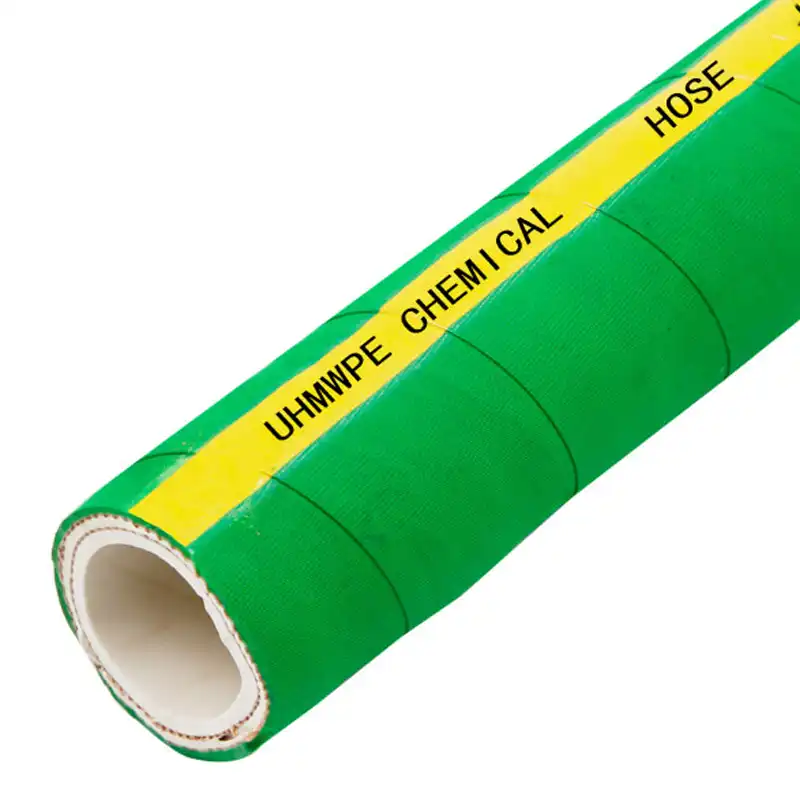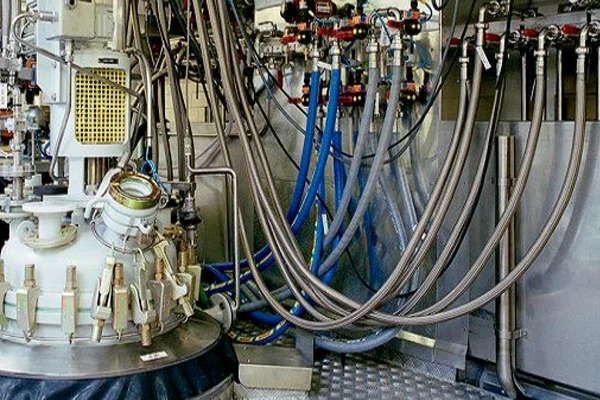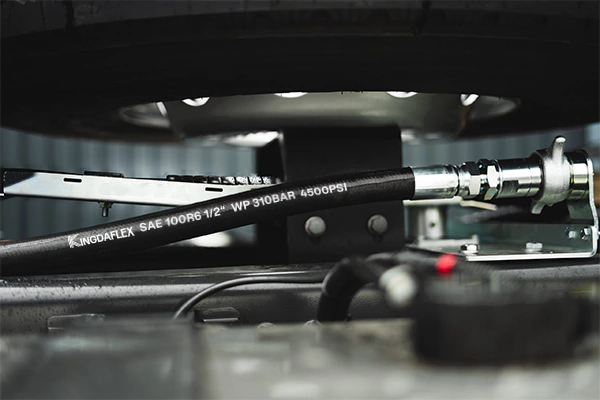Chemical hoses play a critical role in industrial applications, ensuring the safe and efficient transfer of various chemicals and fluids. These specialized hoses are designed to withstand the unique challenges posed by handling corrosive, abrasive, and hazardous materials.
In this article, we’ll delve into chemical hoses, exploring their composition, applications, benefits, and best practices for their use.
What Is Chemical Hose
A chemical hose is a specialized type of industrial hose designed for the safe and efficient transfer of various chemicals and fluids in industrial settings.
These chemical hoses are essential for industries that deal with corrosive, abrasive, and hazardous materials, as they ensure the protection of personnel, equipment, and the environment during the transfer process.
What Is Chemical Hose Made of
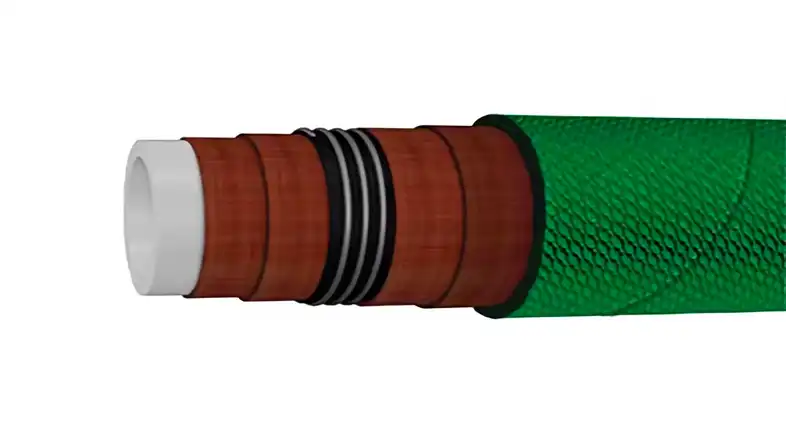
Chemical hoses are carefully crafted using a combination of specialized materials to ensure their ability to handle a wide range of corrosive and hazardous chemicals.
These materials are chosen for their remarkable resistance to chemical reactions, abrasion, and degradation caused by the substances they come into contact with. The construction of a chemical hose involves several layers that work together to provide both durability and safety during the transfer of chemicals.
Inner Tube:
The innermost layer of a chemical hose is the inner tube, which directly comes into contact with the chemical being transferred. This tube is typically made from synthetic rubber compounds or specially formulated thermoplastics. The choice of material depends on the specific type of chemical the hose will handle. These materials are selected to prevent chemical reactions, ensuring that the hose remains stable and intact during the transfer process.
Reinforcement Layer:
Surrounding the inner tube is the reinforcement layer. This layer is designed to provide strength and structural integrity to the hose. Common reinforcement materials include textile fibers, steel wire helix, or multiple layers of synthetic fabrics. The reinforcement layer prevents the hose from collapsing under vacuum or bursting under high pressure, enhancing its overall durability.
Cover:
The outermost layer of the chemical hose is the cover, which protects the inner layers from external factors such as abrasion, sunlight, ozone, and chemical exposure. This layer is also made from synthetic rubber compounds or thermoplastic materials, selected for their resistance to the environment in which the hose will be used. The cover may also have additional properties, such as being flame-resistant or anti-static, depending on the application.
A chemical hose is made of multiple layers that work in tandem to ensure the safe and efficient transfer of corrosive and hazardous chemicals. The inner tube prevents chemical reactions, the reinforcement layer provides strength, and the cover shields the hose from external factors. This careful construction allows chemical hoses to effectively handle a wide range of chemicals while maintaining the safety of personnel, equipment, and the environment.
Composition and Materials
Chemical hoses are meticulously crafted using materials that offer exceptional resistance to the chemicals they will come in contact with. Common materials include synthetic rubbers, thermoplastics, and fluoropolymers. These materials provide high levels of chemical resistance and prevent the hose from deteriorating when exposed to aggressive substances.
Types of Chemical Hoses
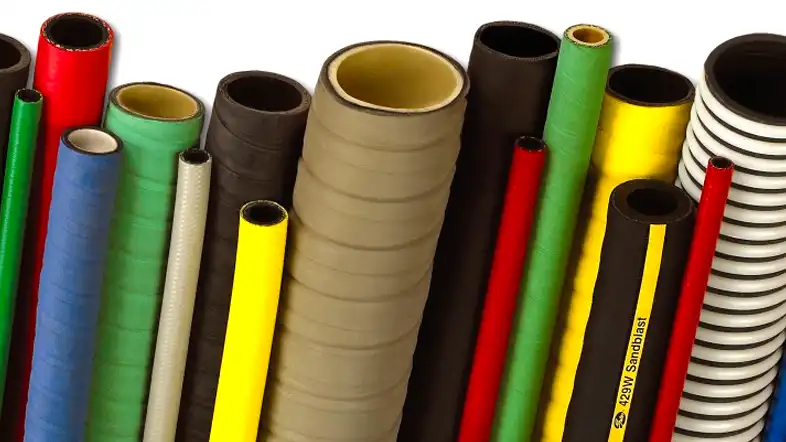
There are various types of chemical hoses, each tailored to specific applications and requirements. Some hoses are engineered for transferring aggressive acids, while others excel at handling abrasive materials. Selecting the right type of hose ensures optimal performance and safety.
Chemical hoses come in various types, each designed to meet specific requirements and handle different types of chemicals.
The choice of chemical hose depends on factors such as the type of chemicals being transferred, the operating conditions, and the industry in which they are used. Here are some common types of chemical hoses:
- Acid and Chemical Transfer Hoses: These hoses are specifically engineered to handle a wide range of acids, alkalis, and other corrosive chemicals. They are designed with materials that offer high chemical resistance to prevent chemical reactions and degradation.
- UHMWPE Chemical Hoses: Hoses made from Ultra-High Molecular Weight Polyethylene (UHMWPE) are known for their exceptional resistance to chemicals and abrasion. They are commonly used for the transfer of aggressive chemicals and solvents.
- Composite Hoses: Composite hoses are constructed from multiple layers of different materials, such as thermoplastics, metals, and fabrics. This layered construction provides excellent chemical resistance and flexibility, making them suitable for a variety of chemical applications.
- PTFE Hoses: Hoses made from Polytetrafluoroethylene (PTFE), commonly known as Teflon, offer superior chemical resistance and can handle extremely corrosive chemicals. They are often used in industries such as pharmaceuticals and food processing.
- Chlorine Transfer Hoses: These hoses are specifically designed for the safe transfer of chlorine gas. They are constructed with materials that can withstand the unique challenges posed by handling chlorine.
- Petroleum Hoses: While not designed exclusively for chemicals, petroleum hoses are capable of handling a wide range of chemicals in addition to petroleum products. They are commonly used in industries involving oil and fuel.
- Bulk Material Handling Hoses: These hoses are used for transferring abrasive materials, such as powders, granules, and slurries. They are built to withstand the wear and tear caused by abrasive substances.
- Vapor Recovery Hoses: Vapor recovery hoses are designed to safely handle volatile chemicals and gases. They prevent the escape of harmful vapors into the environment during the transfer process.
- Food-Grade Chemical Hoses: These hoses are designed for the transfer of food and beverage products, as well as non-fatty and non-oily substances. They comply with FDA and NSF standards to ensure food safety.
- Pharmaceutical Hoses: Similar to food-grade hoses, pharmaceutical hoses are designed for transferring chemicals used in pharmaceutical production. They adhere to strict quality and safety standards.
- Agricultural Chemical Hoses: These hoses are used in agricultural applications to transfer fertilizers, pesticides, and other chemicals used in crop management.
- Tank Truck Hoses: Tank truck hoses are used to transfer chemicals from storage tanks to delivery trucks. They are designed to handle the rigors of loading and unloading operations.
Each type of chemical hose has its own set of advantages and limitations. Selecting the right type of hose is crucial to ensure the safe and efficient transfer of chemicals while minimizing the risk of leaks, contamination, and accidents. It’s important to consider factors such as chemical compatibility, temperature, pressure, and the specific requirements of the application when choosing a chemical hose.
Chemical Hose Applications

Chemical hoses are designed to safely transport acids, solvents, and other hazardous chemicals in industrial, laboratory, and manufacturing environments. They provide resistance to corrosion, high temperatures, and chemical reactions, ensuring safe and reliable operation while protecting personnel and equipment from chemical hazards.
- Research & Development Facilities: Chemical hoses safely transfer experimental chemicals, reagents, and solvents. Their durability and chemical resistance protect sensitive research processes and maintain safety standards.
- Industrial Chemical Transfer: Chemical hoses are widely used for moving corrosive chemicals, acids, and solvents between tanks, reactors, and processing equipment. Their chemical-resistant construction ensures safe transfer without leaks, contamination, or material degradation.
- Laboratory Applications: In laboratories, chemical hoses safely connect experiments, storage containers, and dispensing systems. They resist chemical attacks and maintain purity, ensuring accurate results while protecting personnel from spills or exposure to hazardous substances.
- Food and Beverage Processing: Chemical hoses can handle cleaning agents, sanitizers, and additives used in food production. Their non-reactive materials prevent contamination, ensuring safety and compliance with hygiene standards.
- Pharmaceutical Manufacturing: Hoses transport chemical solutions and ingredients safely during drug production. Chemical-resistant construction ensures purity, prevents cross-contamination, and maintains regulatory compliance while protecting sensitive processes from chemical damage.
- Petrochemical Industry: Used for transferring fuels, oils, and chemical additives, chemical hoses resist harsh chemicals, extreme temperatures, and pressure. They provide safe and reliable operation in refineries, chemical plants, and distribution facilities.
- Water Treatment Plants: Chemical hoses deliver chlorine, acids, and other treatment chemicals safely to tanks, pipes, and filtration systems. Their durability and chemical resistance prevent leaks, corrosion, and operational hazards.
- Automotive Industry: Chemical hoses are used for transporting coolants, oils, and chemical cleaners in automotive production and maintenance. They ensure safe handling of corrosive fluids and maintain workflow efficiency.
- Agriculture and Fertilizers: Hoses transfer pesticides, herbicides, and liquid fertilizers safely to application equipment. Chemical resistance prevents degradation and ensures safe delivery in farming operations.
- Paint and Coating Industry: Used to transfer solvents, coatings, and chemical additives safely. Chemical hoses resist corrosion, prevent leaks, and maintain consistent fluid flow for painting, spraying, or coating processes.
- Mining Applications: Chemical hoses transport acids, water treatment chemicals, and slurries safely in mining operations. Their resistance to abrasion and corrosion ensures reliable operation under harsh conditions.
- Waste Management: Chemical hoses handle hazardous waste liquids, acids, and solvents for collection and disposal. They prevent spills, chemical reactions, and environmental contamination while ensuring safe operations.
- Construction Industry: Hoses deliver concrete additives, curing chemicals, and cleaning agents safely to construction sites. Chemical resistance ensures durability and protects workers from hazardous exposure.
- Marine Applications: Used for handling fuels, cleaning agents, and chemical treatments on ships and offshore platforms. Chemical hoses resist corrosion and maintain safe operations in harsh marine environments.
- HVAC and Cooling Systems: Chemical hoses transport coolants, antifreeze, and cleaning chemicals in HVAC systems. Their resistance to chemical degradation ensures efficient system maintenance and longevity.
Chemical Hose Benefits
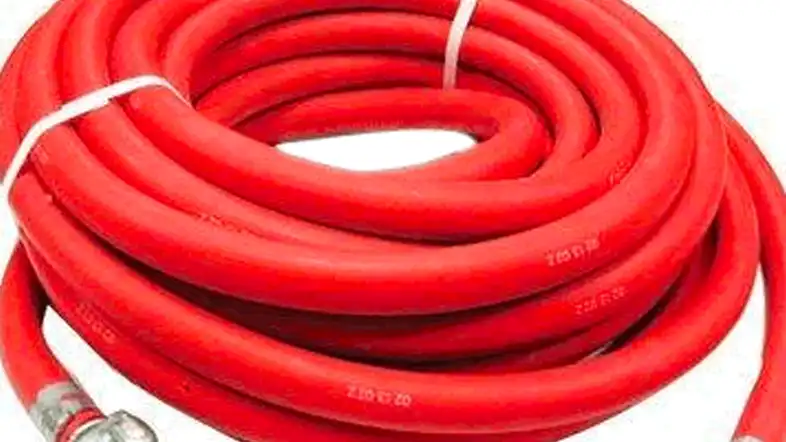
Chemical hoses are essential for safely transferring aggressive chemicals in industrial environments. They are designed to resist corrosion, abrasion, and chemical reactions, ensuring reliable performance. Choosing the right chemical hose increases safety, efficiency, and longevity in your operations.
Durability and Longevity: Reinforced layers in chemical hoses enhance their strength and resistance to wear, punctures, and abrasion. This durability extends their operational life, reduces replacement frequency, and ensures reliable chemical transfer in demanding industrial applications.
Corrosion Resistance: Chemical hoses are built to withstand harsh chemicals, preventing degradation and ensuring long-lasting performance. This resistance minimizes maintenance costs and protects both workers and equipment, allowing consistent chemical transfer without the risk of leaks, contamination, or hose failure.
Flexibility and Ease of Use: These hoses are lightweight and flexible, making them easy to handle, install, and maneuver in tight spaces. Operators can transport chemicals safely without strain, and the flexibility reduces stress on fittings, extending the hose’s service life.
Temperature Tolerance: Chemical hoses can handle a wide range of temperatures, both hot and cold. This makes them suitable for diverse industrial applications where chemicals may be heated, cooled, or stored at extreme temperatures, maintaining performance and safety under varying conditions.
Leak Prevention: Designed with high-quality inner linings and secure fittings, chemical hoses reduce the risk of leaks and spills. This ensures safer handling of hazardous substances, protects the environment, and complies with industry safety regulations.
Chemical Hose Connectors
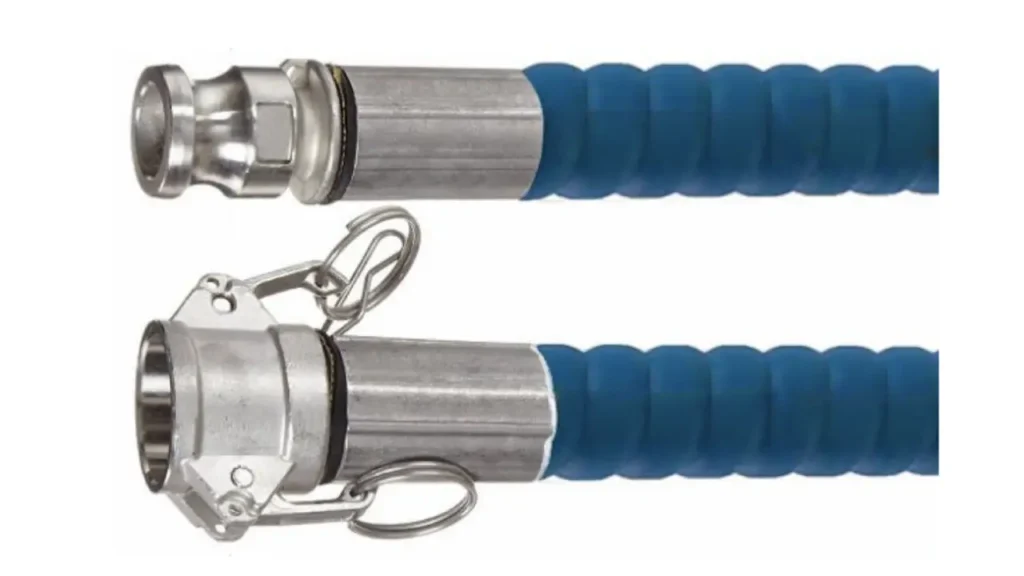
Chemical hose connectors are critical components in industrial settings, designed to ensure safe and efficient transfer of various chemicals. They are engineered from materials resistant to corrosion and degradation from the substances they handle, such as stainless steel, polypropylene, or specialized composites, and often feature robust sealing mechanisms to prevent leaks and spills. Proper selection and installation are paramount for operational safety and preventing environmental contamination.
- Material Compatibility: Connectors must be constructed from materials that are chemically resistant to the specific media being transferred to prevent degradation, leaks, and contamination.
- Sealing Mechanism: High-integrity seals, often involving O-rings, gaskets, or proprietary designs, are crucial to prevent leaks, especially with hazardous or volatile chemicals.
- Pressure and Temperature Ratings: Connectors must be rated for the maximum operating pressure and temperature of the system to ensure safe and reliable performance.
- Connection Type: Various connection types exist, including cam and groove, flange, threaded, and quick-disconnect fittings, each suited for different applications and ease of use.
- Safety Features: Some connectors incorporate safety features like locking mechanisms, breakaway couplings, or excessive flow shut-off valves to enhance operational safety.
How to Choose the Right Chemical Hose
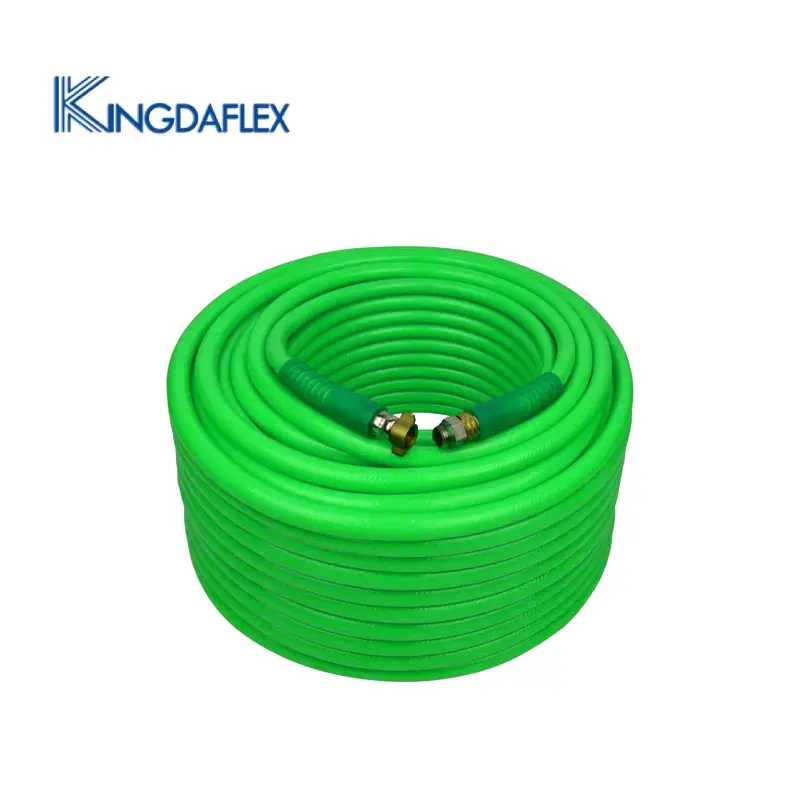
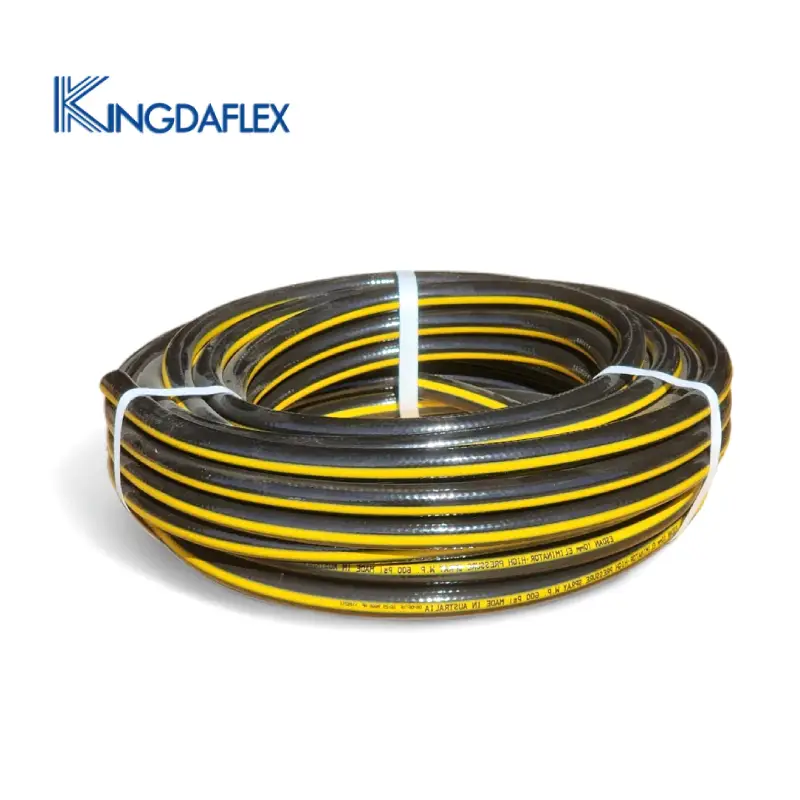
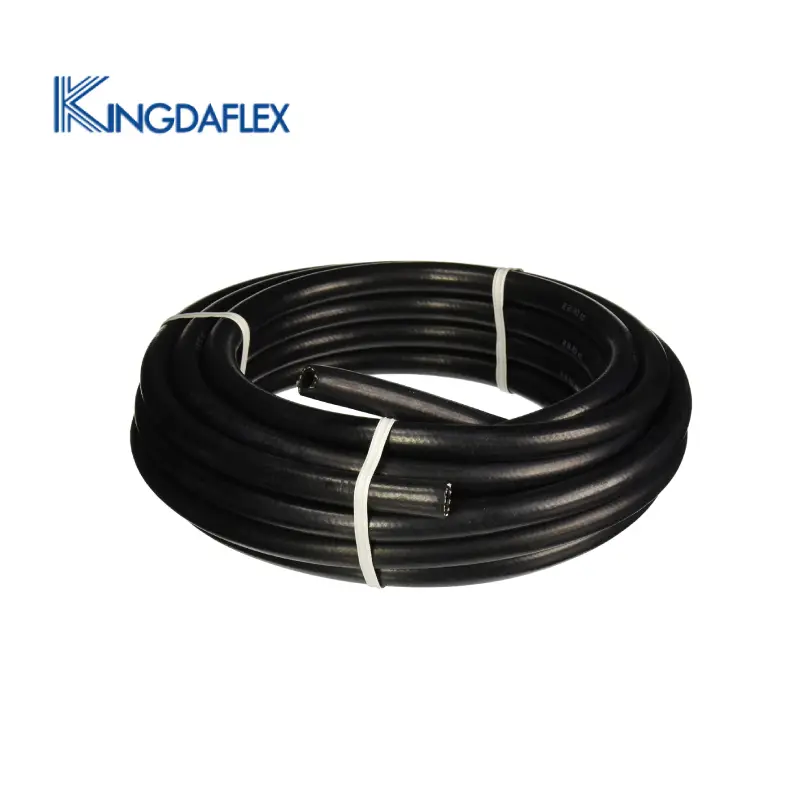
Choosing the correct chemical hose is vital for safety, efficiency, and longevity in chemical transfer applications. It requires careful consideration of several key factors to ensure compatibility with the transported media and operating conditions.
Step 1: Evaluate Chemical Compatibility
The most critical factor is ensuring the hose material is chemically compatible with the substance being transferred. Consult chemical resistance charts for the hose’s tube, cover, and fittings. Incorrect material can lead to rapid degradation, leaks, and potential safety hazards, making this assessment paramount for operational integrity.
Step 2: Consider Temperature and Pressure
Assess the maximum and minimum temperatures the hose will encounter, along with the system’s operating pressure. Hoses have specific temperature and pressure ratings, and exceeding these can lead to failure. High temperatures can degrade materials, while excessive pressure can cause bursting, both posing significant safety risks.
Step 3: Determine Hose Size and Length
Proper hose diameter (ID) is crucial for flow rate and pressure drop. Too small, and pressure drop increases; too large, and flow velocity drops. The correct length prevents unnecessary stress from bending or pulling, which can shorten the hose’s lifespan and compromise its performance.
Step 4: Account for Application Environment
Consider the external environment where the hose will be used. Factors like abrasion, ozone exposure, UV radiation, and potential crushing hazards influence the choice of cover material. A robust cover protects the hose from external damage, extending its service life in harsh industrial settings.
Step 5: Select Appropriate End Fittings
The end fittings must also be chemically compatible with the fluid and rated for the application’s pressure and temperature. Ensure the fittings are properly attached to the hose according to manufacturer specifications to prevent leaks and ensure a secure connection during chemical transfer operations.
Chemical Hose Maintenance Tips
Proper maintenance of chemical hoses is crucial for extending their lifespan, ensuring safe operation, and preventing costly failures or environmental contamination. Regular inspections and adherence to best practices can significantly reduce risks associated with chemical transfer.
Documentation: Maintain a detailed record of each hose, including its purchase date, service history, inspection dates, and any repairs or pressure test results. This helps track the hose’s lifespan and aids in timely replacement.
Regular Visual Inspections: Before each use, visually inspect the entire length of the hose for any signs of damage, including cuts, abrasions, kinks, bulges, soft spots, or cracking. Pay close attention to the areas near the couplings for signs of wear or separation.
Pressure Testing: Periodically, and in accordance with manufacturer recommendations or industry standards, pressure test hoses to ensure their integrity. This helps identify internal damage or weaknesses that may not be apparent during visual inspections.
Proper Storage: Store hoses in a clean, dry, and cool environment, away from direct sunlight, extreme temperatures, and harsh chemicals. Coil hoses neatly to prevent kinking, and avoid stacking heavy objects on top of them, which can cause damage.
Cleanliness: After each use, thoroughly flush and clean the hose to remove any residual chemicals. This prevents contamination between different media and prolongs the life of the hose material. Ensure the cleaning method is compatible with the hose material and the chemicals being removed.
Coupling Integrity: Regularly inspect the couplings for signs of wear, corrosion, or damage. Ensure that the couplings are securely attached to the hose and that any gaskets or seals are in good condition to prevent leaks.
Chemical Hose Regulations and Standards
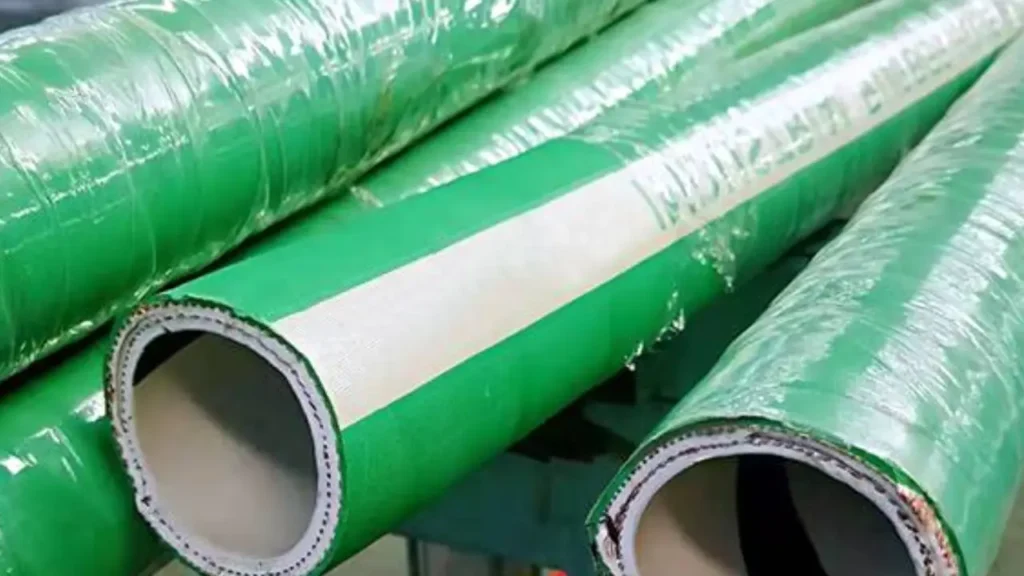
Chemical hose regulations and standards are crucial for ensuring the safe handling, transport, and storage of hazardous substances, minimizing risks to personnel, the environment, and equipment. These regulations often dictate material compatibility, pressure ratings, testing procedures, and labeling requirements. Compliance with these standards is not only a legal obligation but also a fundamental aspect of responsible chemical management, especially given the global nature of chemical trade and logistics.
Hazardous Substance Classifications:
Regulations for chemical hoses are intrinsically linked to the classification of hazardous substances themselves (e.g., GHS – Globally Harmonized System). The classification of a chemical dictates the level of hazard and, consequently, the stringent requirements for the hose material, construction, and handling procedures to ensure safe containment and transfer.
International Standards (e.g., ISO, EN):
Organizations like the International Organization for Standardization (ISO) and the European Committee for Standardization (EN) develop comprehensive standards for chemical hoses. These standards (e.g., EN 12115 for rubber and thermoplastic hoses, ISO 18752 and ISO 1436 for hydraulic hoses, which often cross over into chemical applications) define requirements for construction, performance, pressure ratings, temperature limits, and testing, promoting consistency and safety across international markets.
National Regulations (e.g., China GB Standards, US OSHA):
Individual countries implement their own national regulations and standards. In China, GB (Guobiao) standards are national standards, with GB being mandatory and GB/T being recommended. For example, the “Regulations on the Safe Management of Hazardous Chemicals” (Decree 591 of the State Council of China) and related national standards (like GB 15603-2022 for hazardous chemical storage) govern the overall management of hazardous chemicals, including requirements for equipment like hoses. In the United States, the Occupational Safety and Health Administration (OSHA) sets regulations to protect workers from chemical exposures, including guidelines for safe piping and hose systems.
Industry-Specific Regulations:
Certain industries have specialized requirements for chemical hoses due to the unique nature of their operations. For instance, the pharmaceutical and food and beverage industries often require hoses that comply with FDA (Food and Drug Administration) or NSF (National Sanitation Foundation) standards to prevent contamination and ensure product safety. The maritime industry also has specific codes, such as the International Maritime Organization’s (IMO) International Code for the Construction and Equipment of Ships Carrying Dangerous Chemicals in Bulk (IBC Code).
Transportation Regulations (e.g., ADR, RID):
The transportation of chemicals by road (ADR) and rail (RID) is governed by international regulations that include provisions for the hoses used in loading and unloading operations. These regulations specify requirements for hose assemblies to ensure safe transfer during transit, preventing spills and accidents that could occur on public infrastructure.
Conclusion
Chemical hoses are essential for safe and efficient handling of hazardous substances across various industries. Understanding the different types, materials, and considerations outlined in this guide empowers you to make informed decisions and select the most suitable chemical hose for your specific needs.
Ready to find the perfect chemical hose for your application? Contact us today to explore our extensive range of high-quality, wholesale chemical hoses. Our expert team can assist you in selecting the ideal solution for your specific requirements.
Frequently Asked Questions (FAQs)
What materials are chemical hoses typically made from?
Chemical hoses are commonly made from synthetic rubbers, thermoplastics, and fluoropolymers due to their exceptional chemical resistance.
Can chemical hoses be used for food-grade applications?
Yes, some chemical hoses are designed for food and beverage applications, and they adhere to FDA and NSF standards.
How often should chemical hoses be inspected?
Regular inspection, before and after each use, is recommended to identify wear, damage, or signs of degradation.
Are there guidelines for transporting hazardous chemicals?
Yes, there are regulations and guidelines, such as REACH and ROHS, that chemical hoses must adhere to when handling hazardous substances.
What is the typical lifespan of a chemical hose?
The lifespan of a chemical hose depends on various factors, including the materials used, the chemicals being transferred, and the operating conditions. Regular inspection and proper maintenance can extend the hose’s lifespan.

